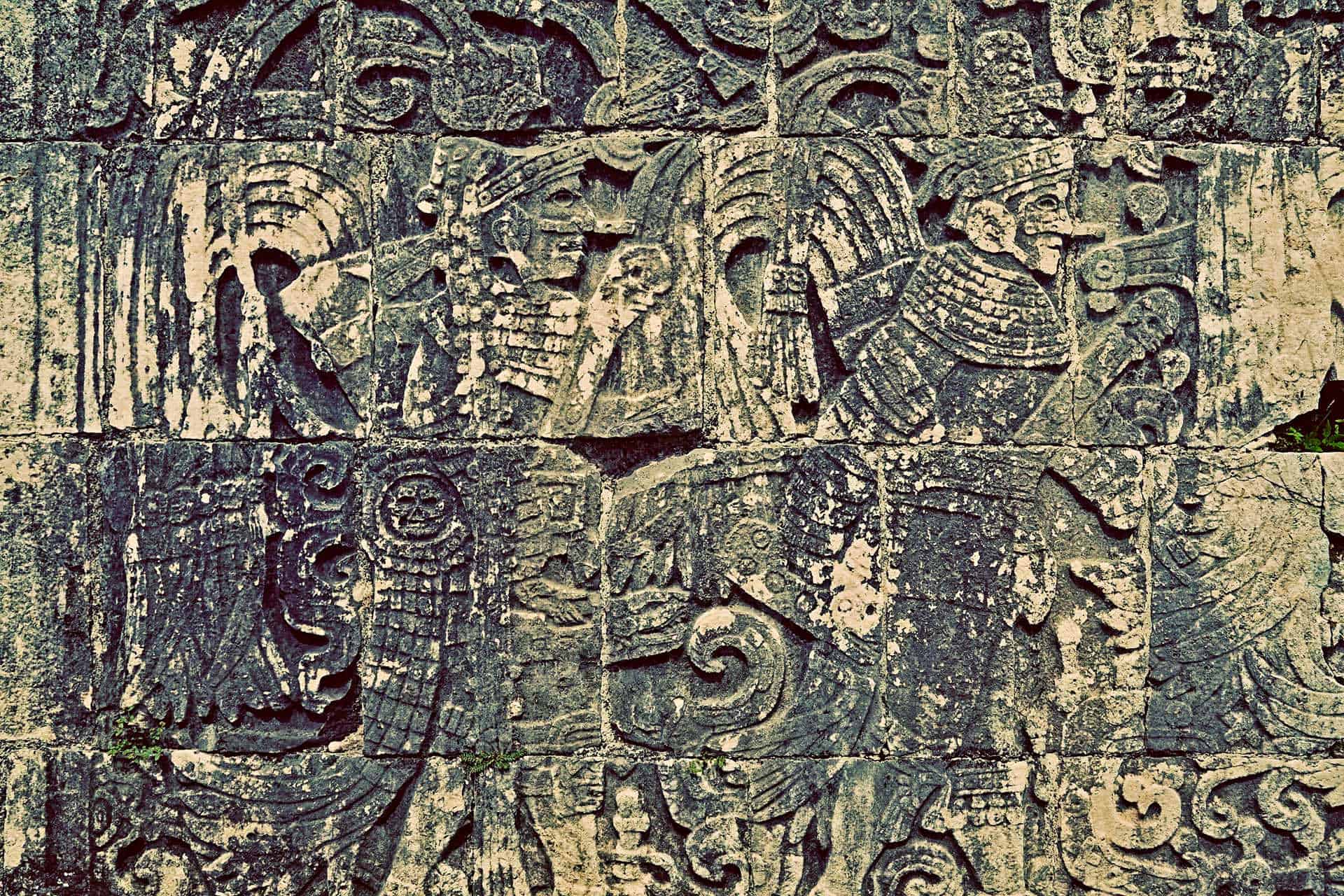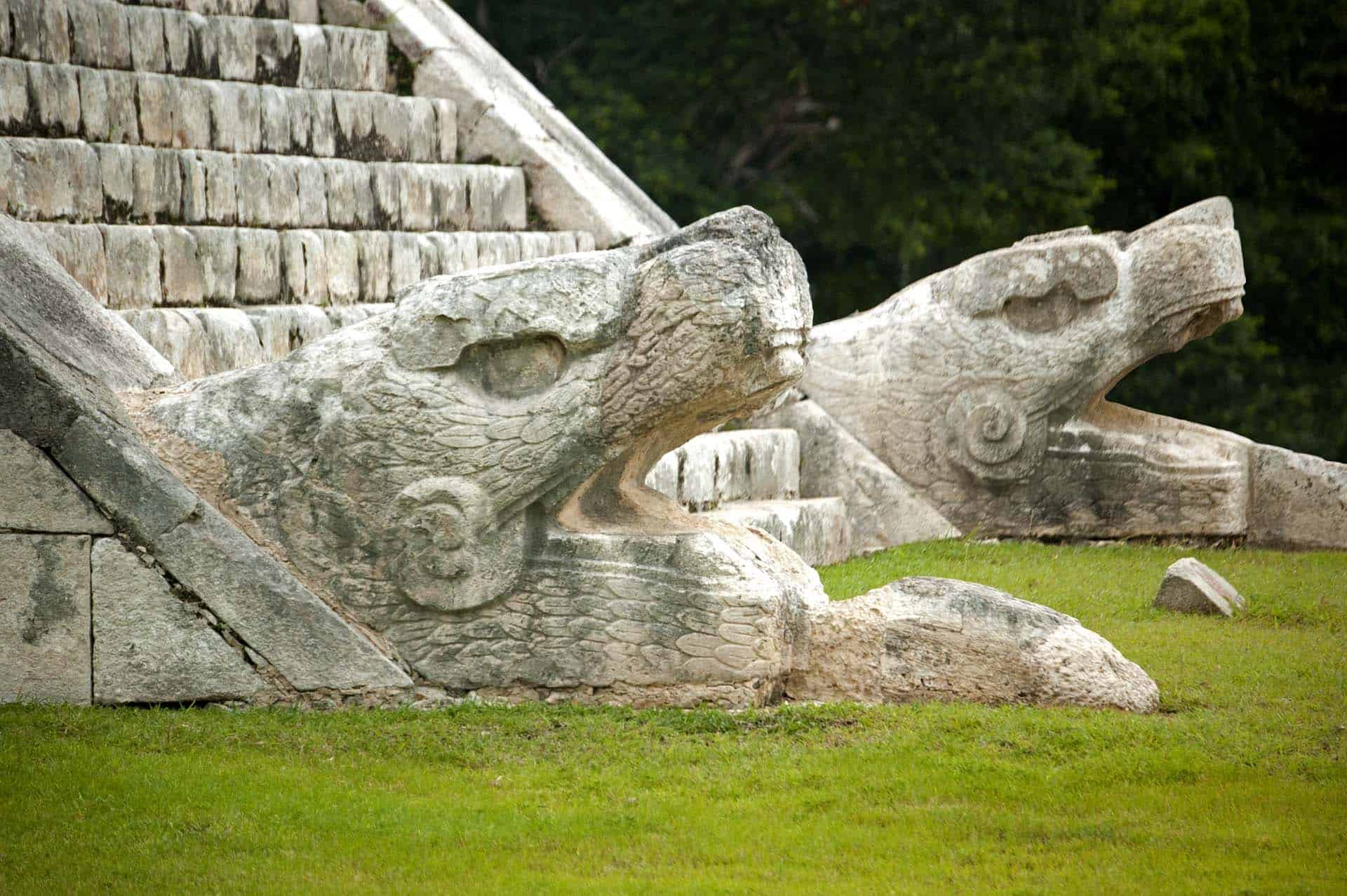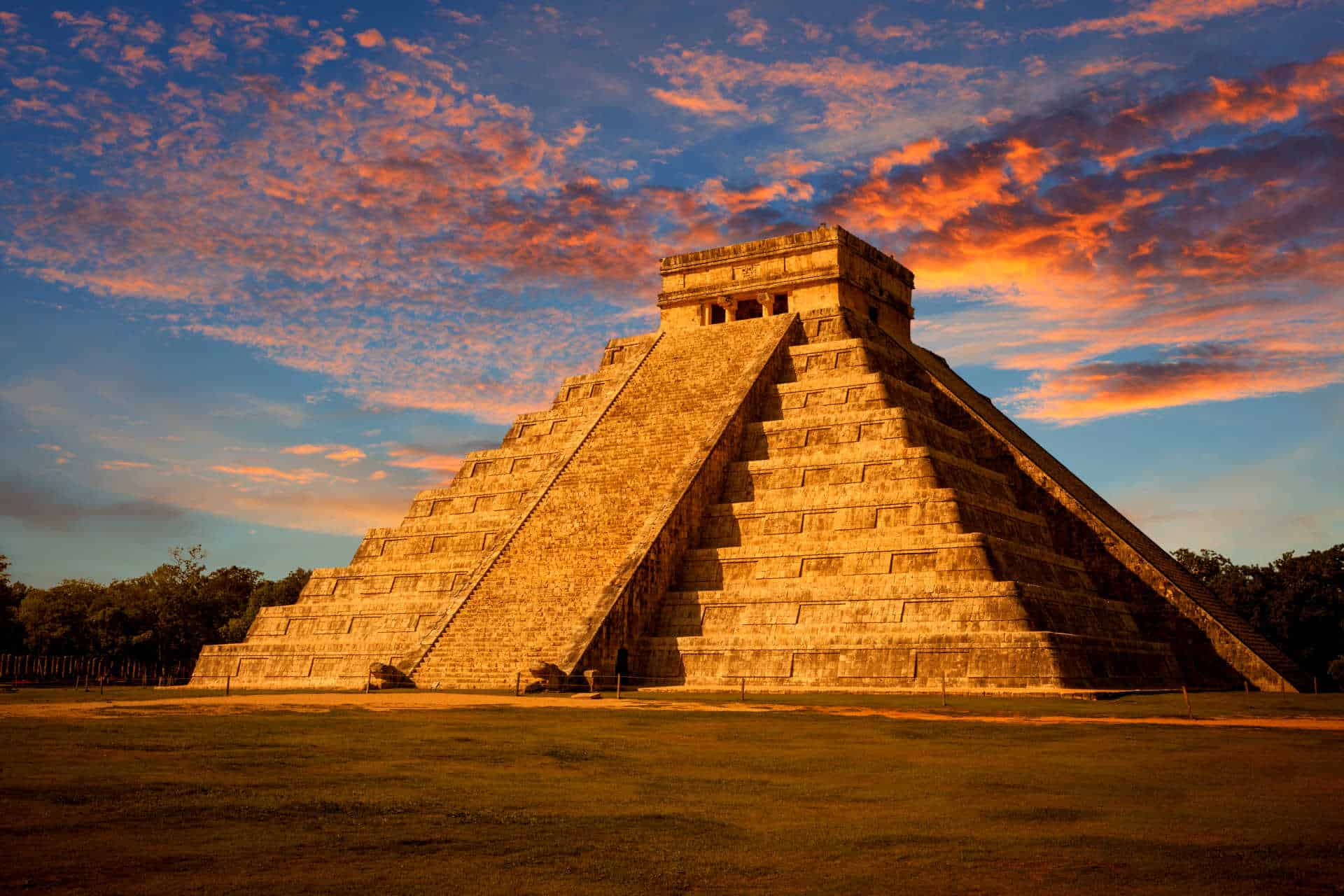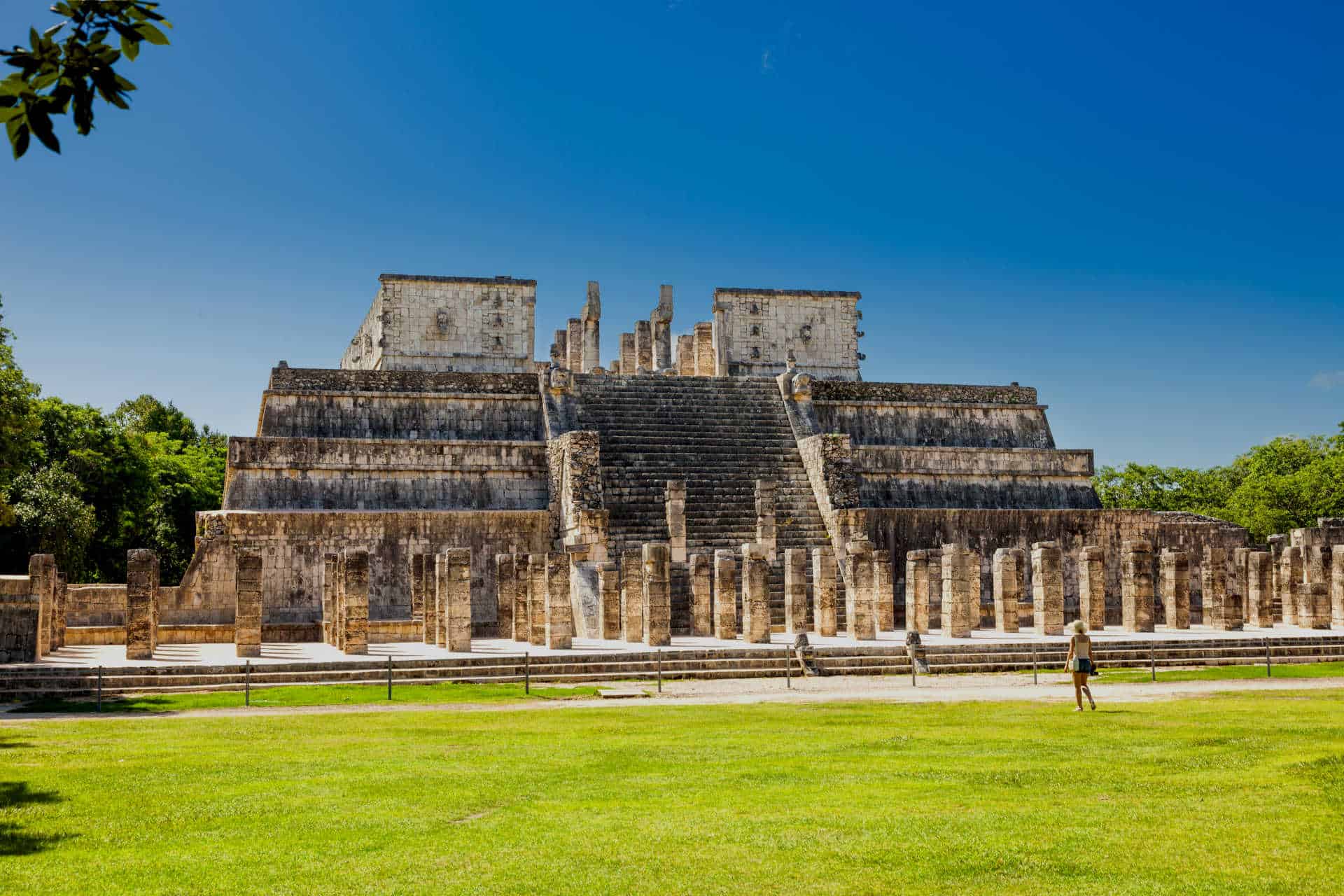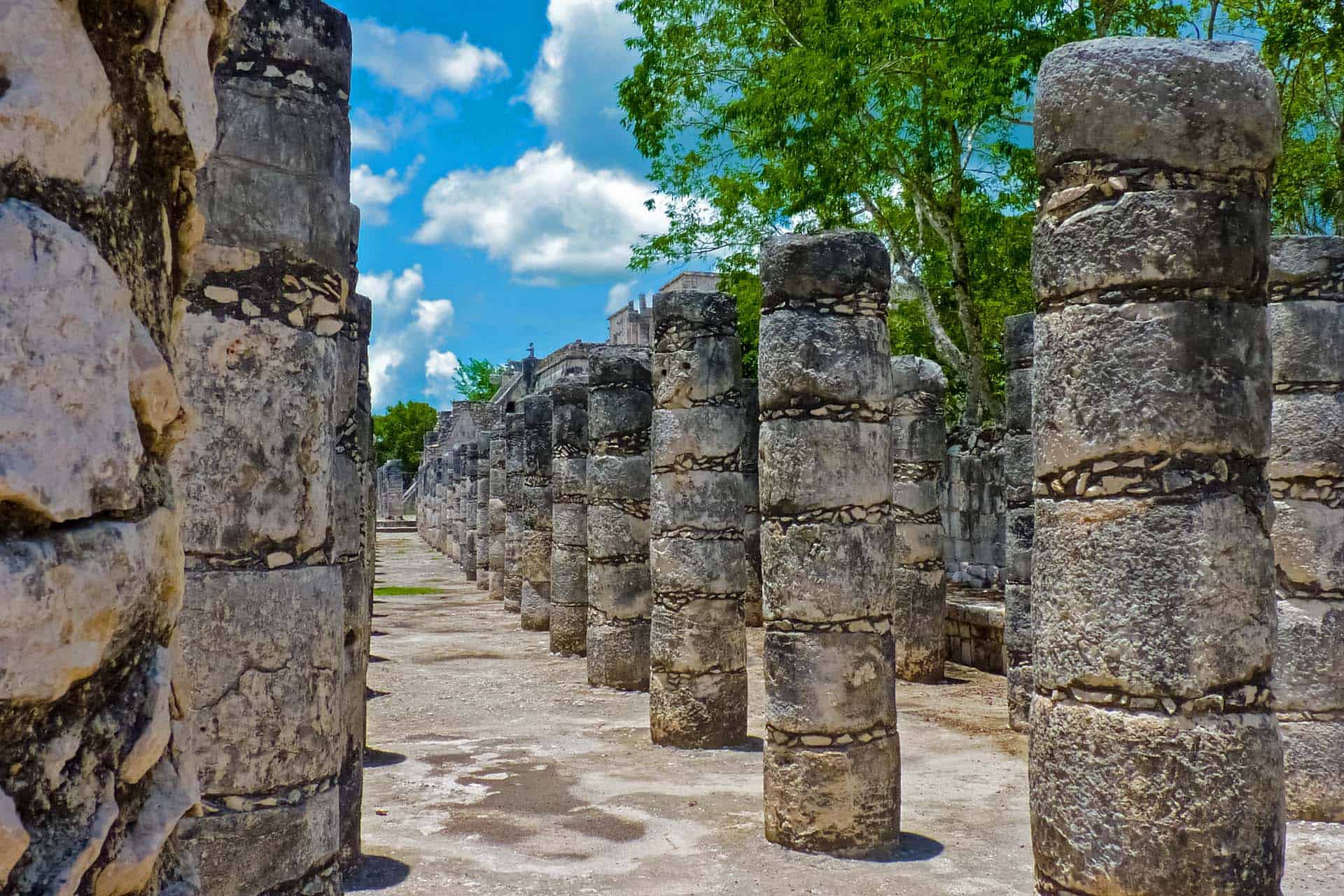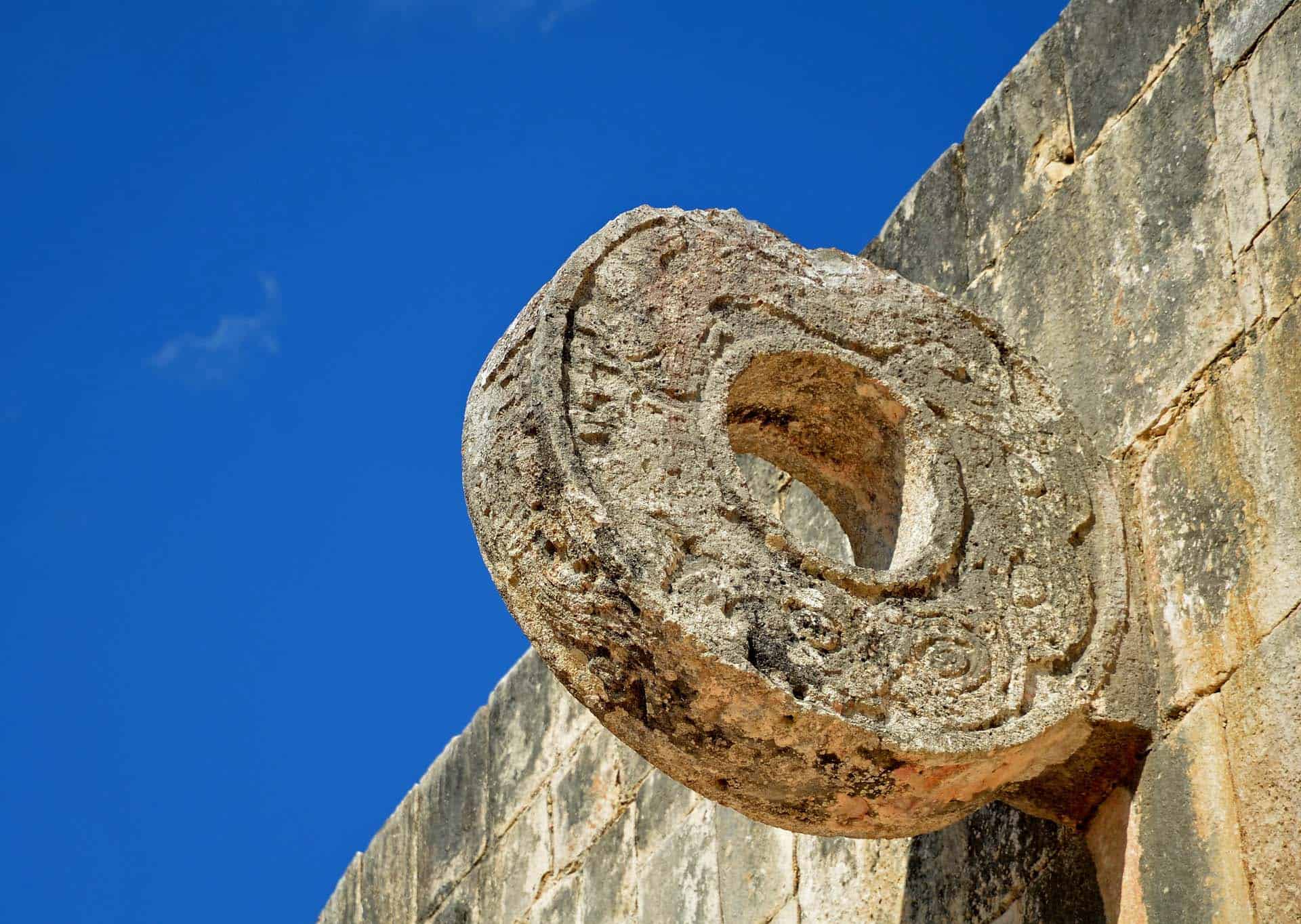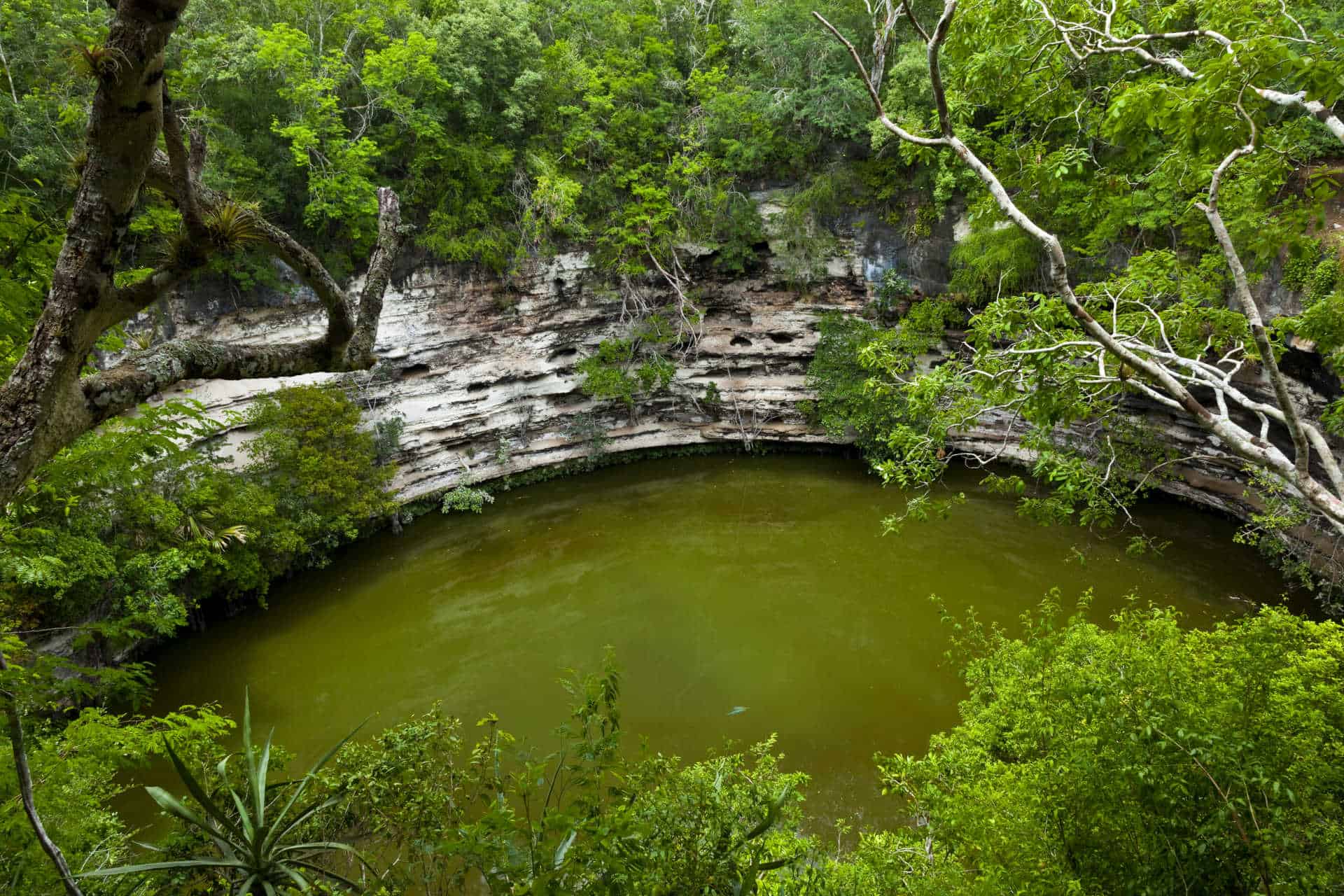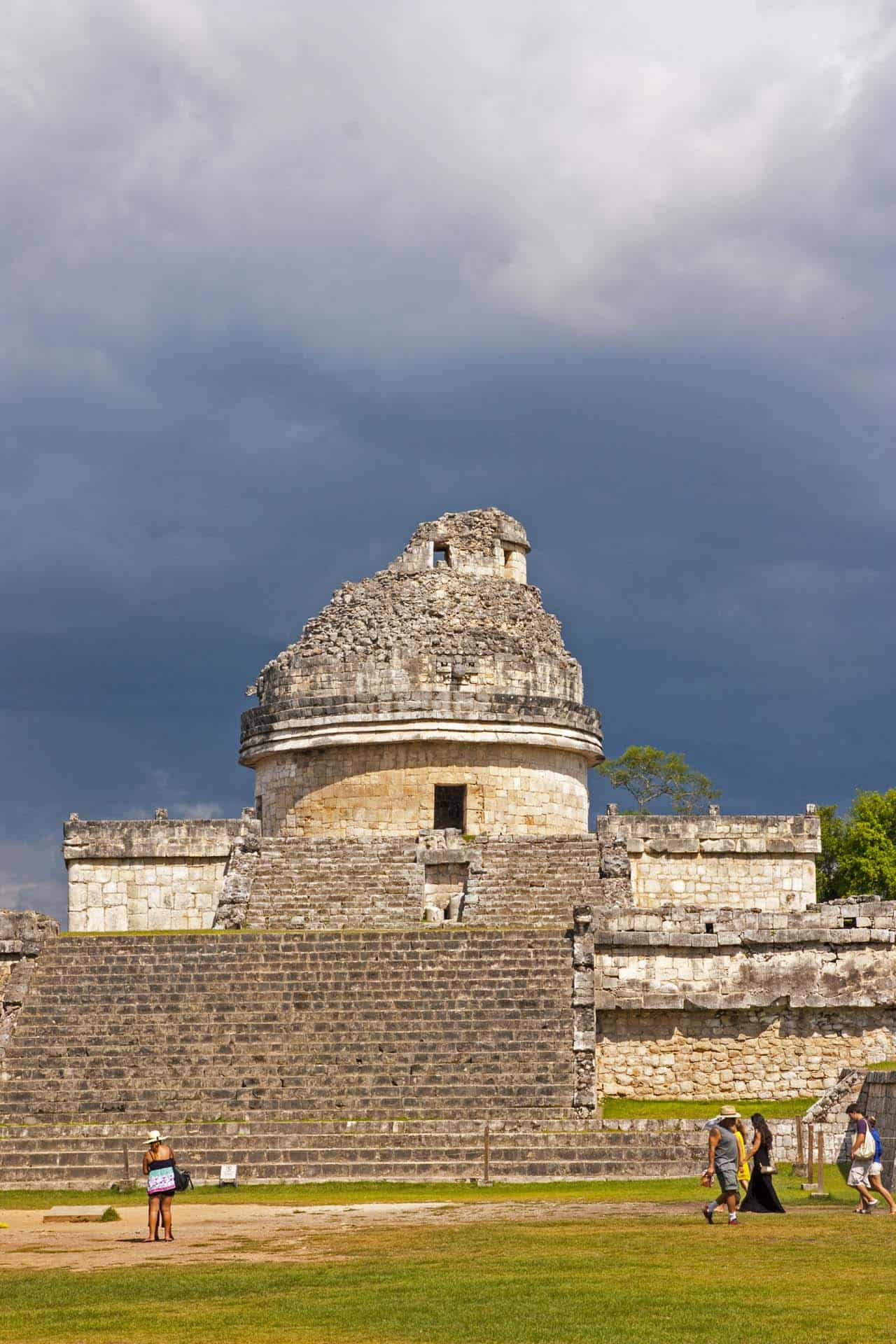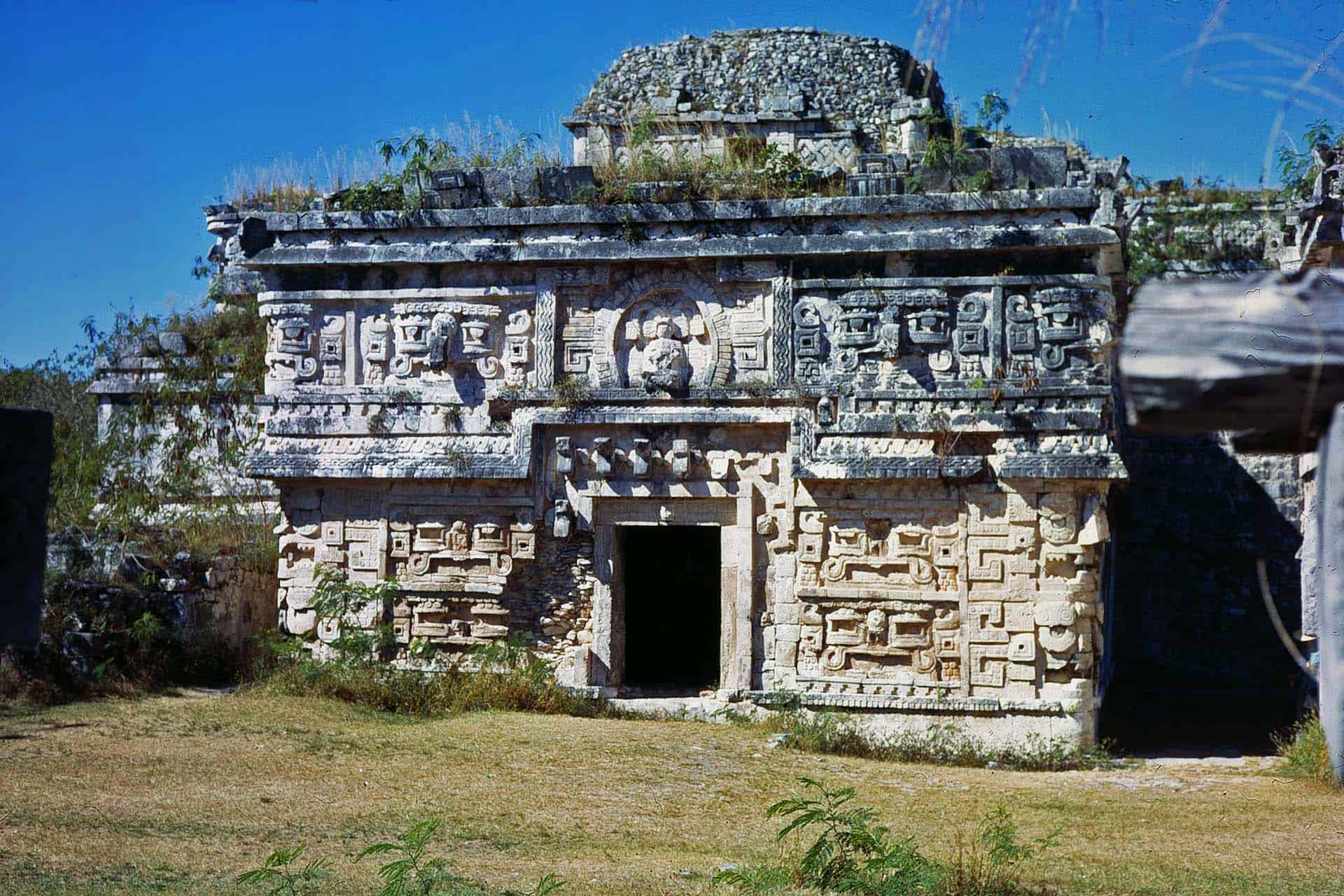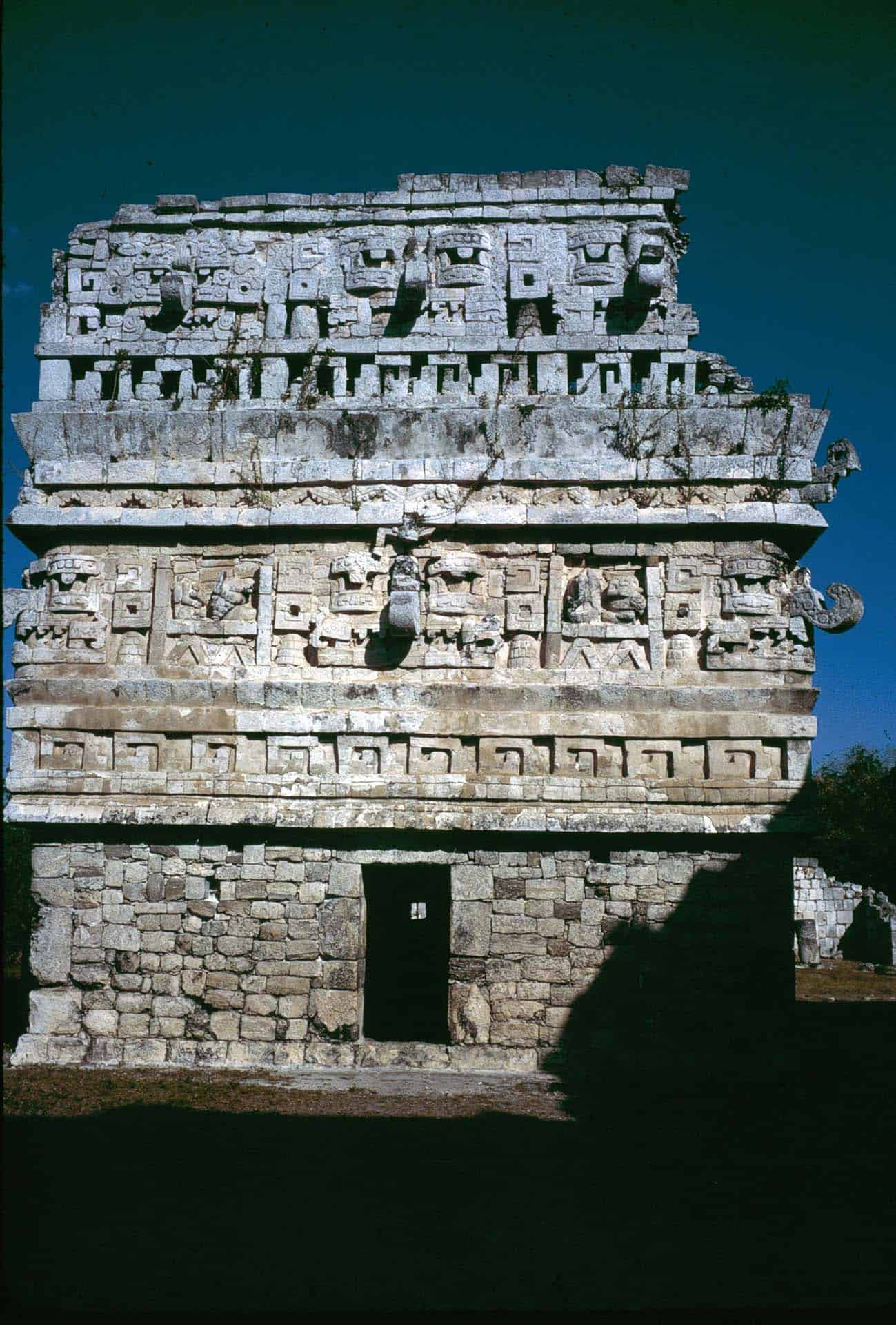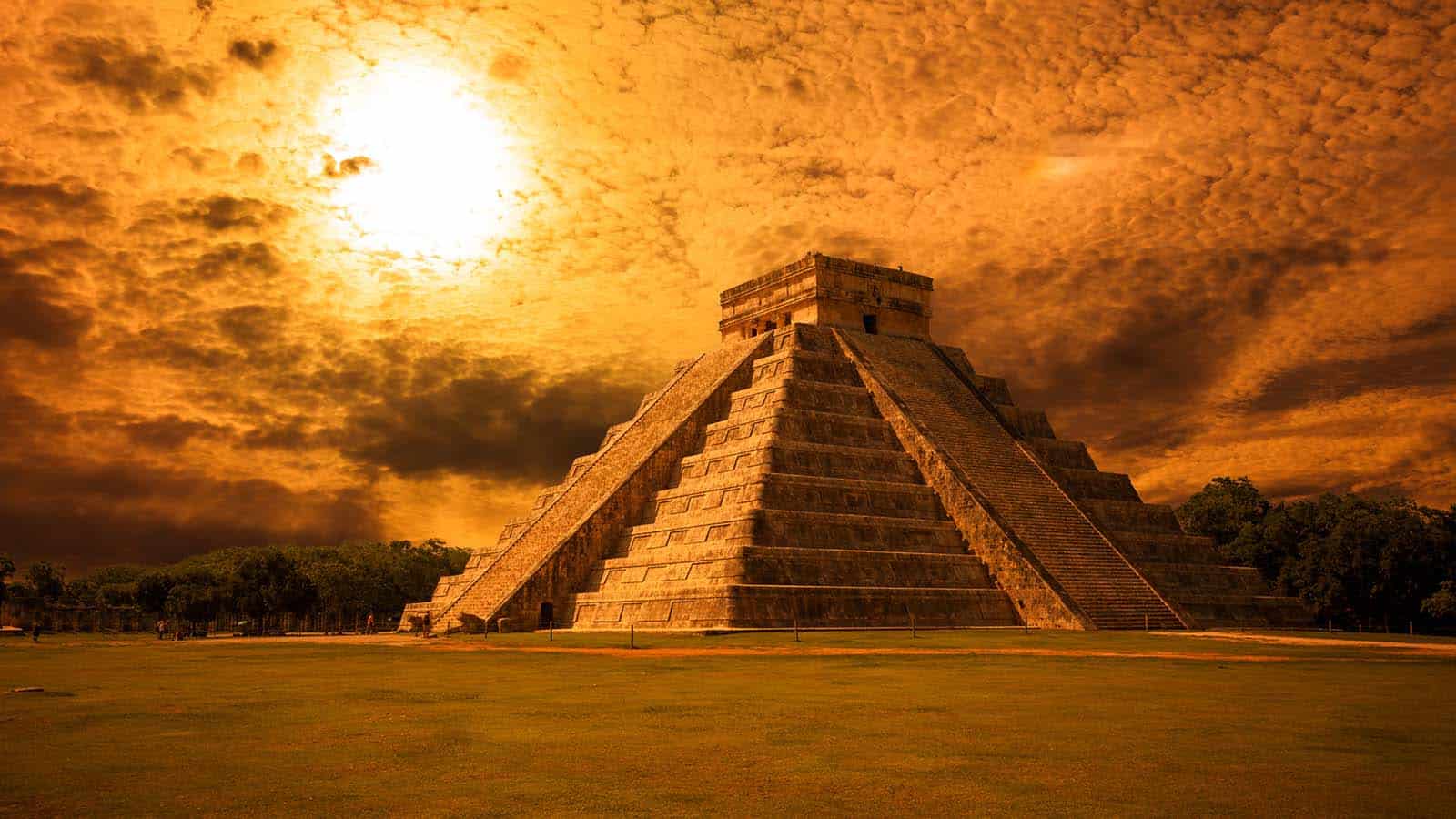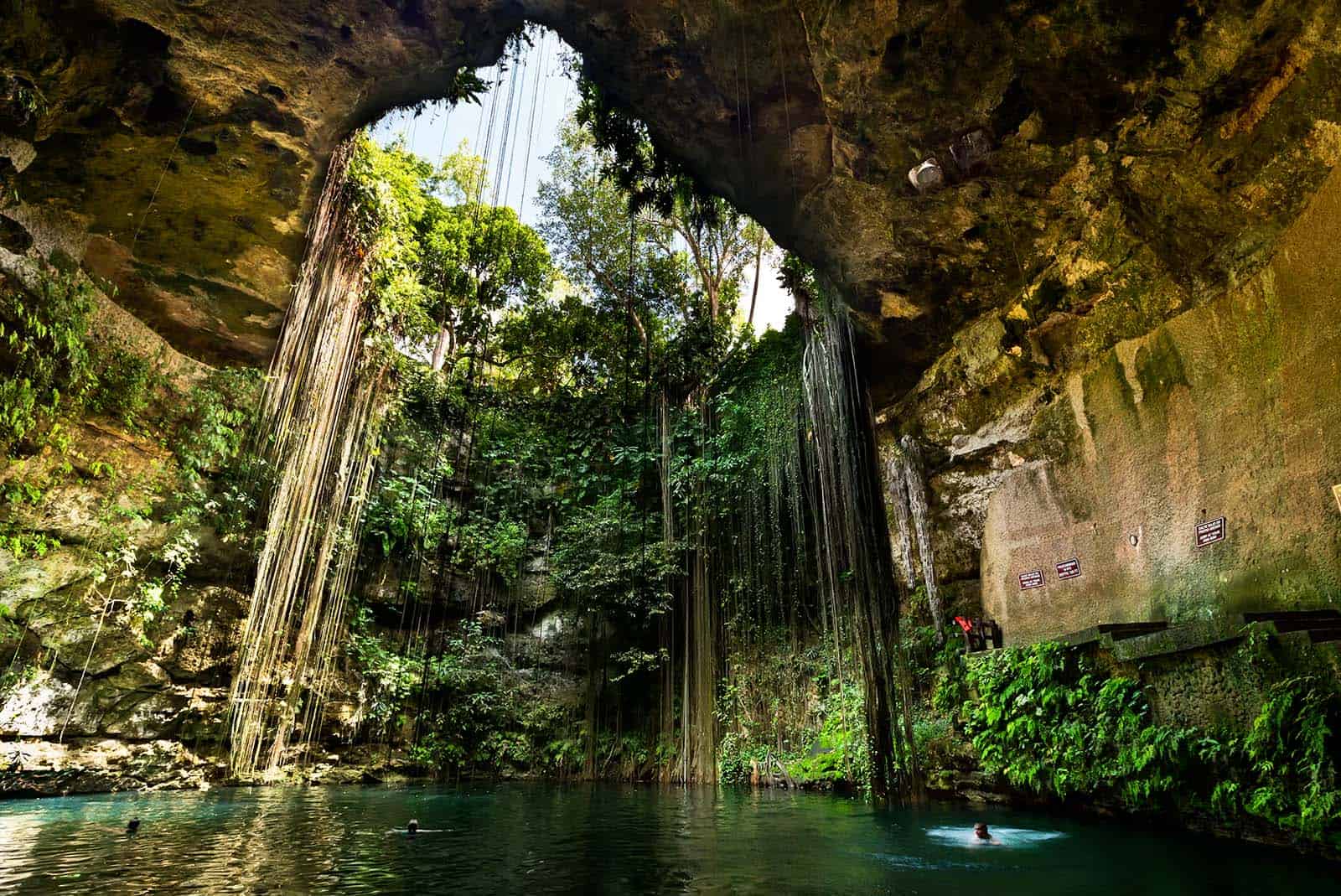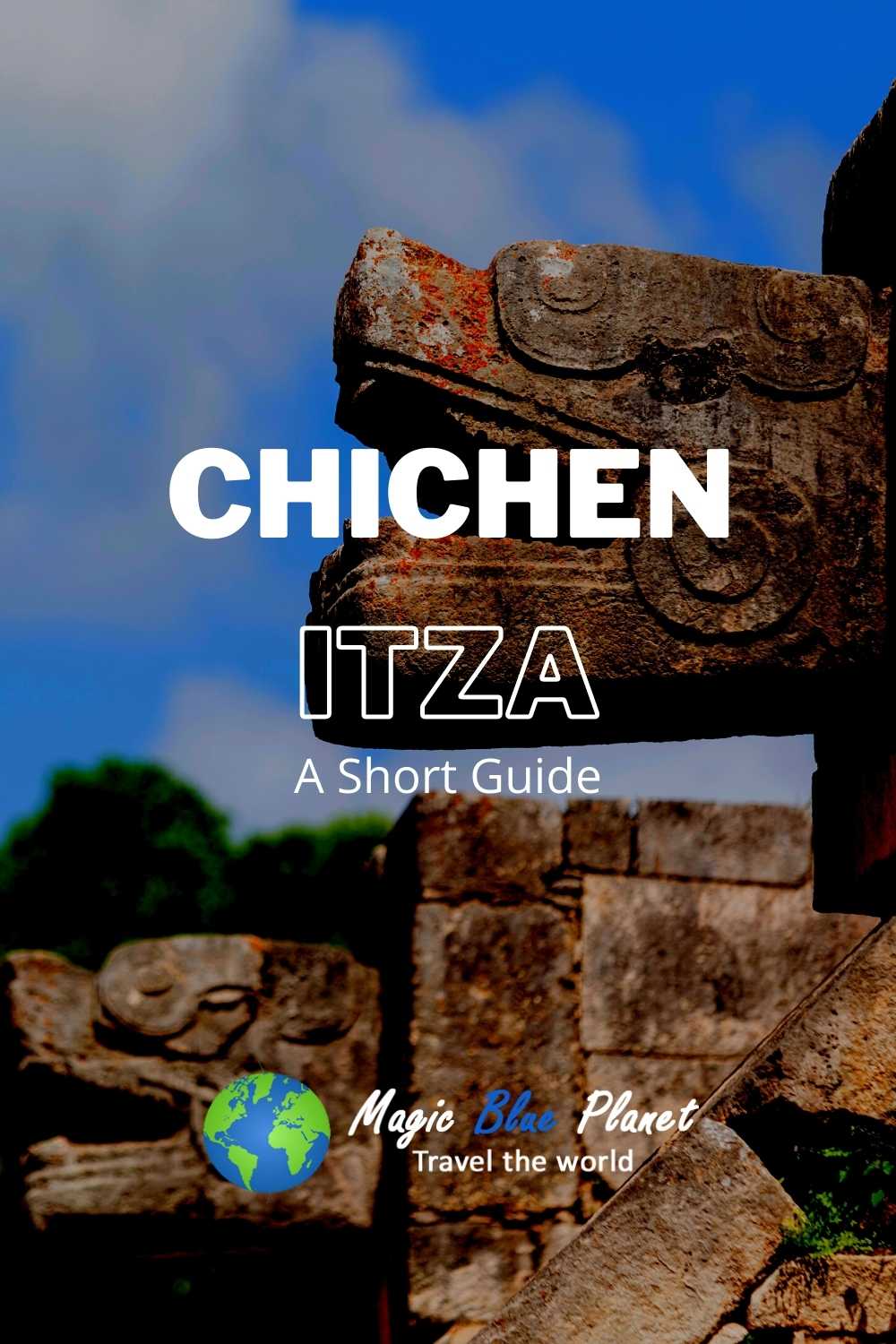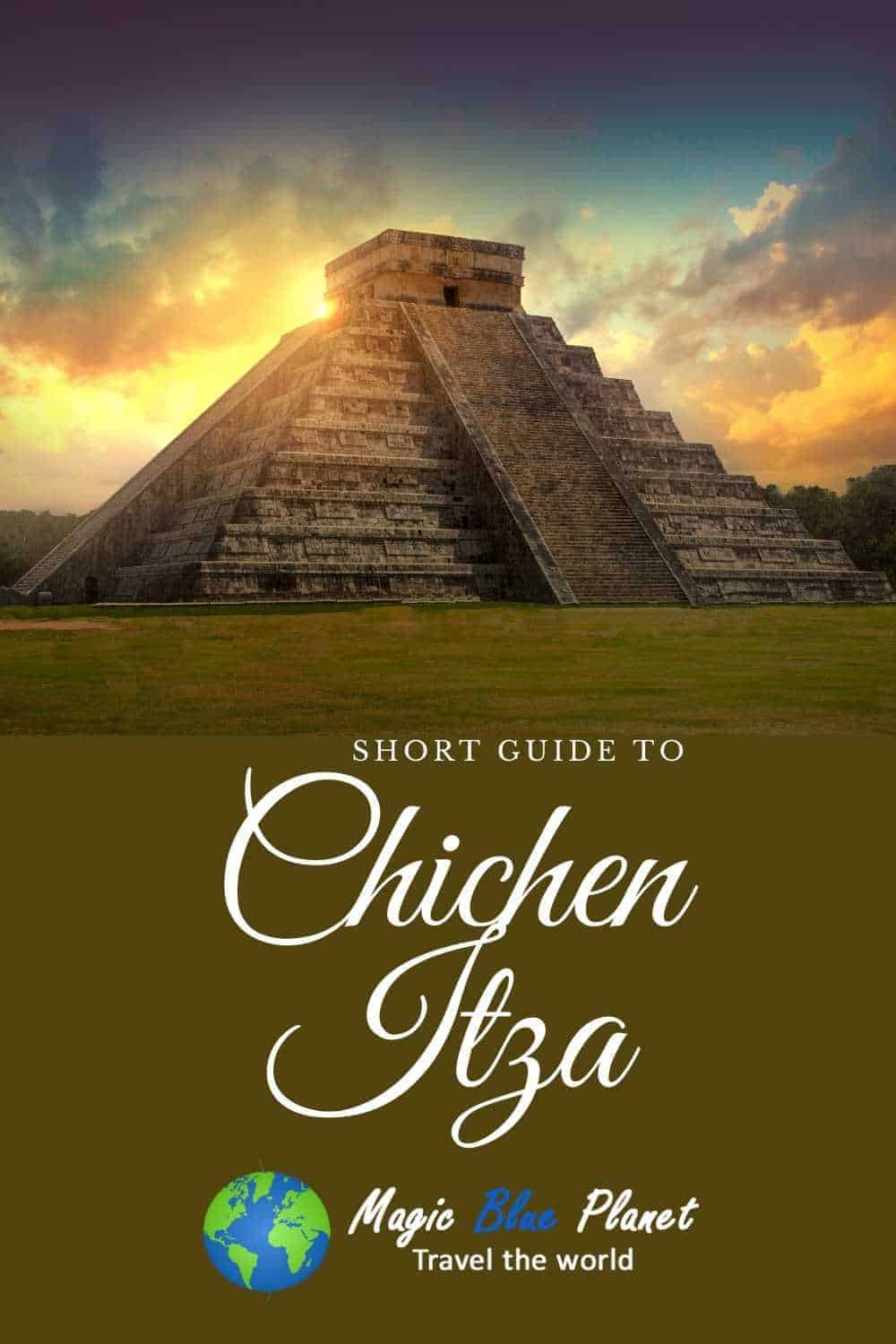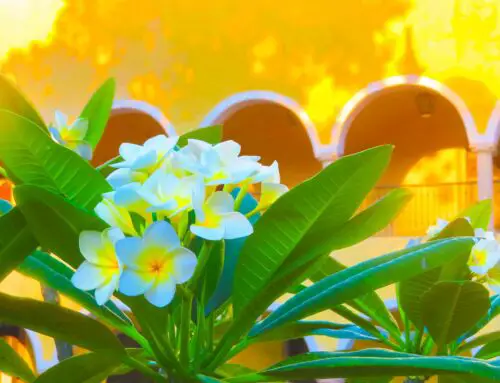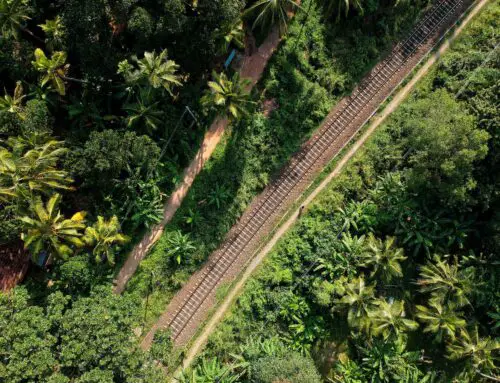Chichén Itza, Mexico – A jaunt to the ancient Mayan world
Chichén Itza, Mexico – A jaunt to the ancient Mayan world
Chichén Itza, Mexico – A jaunt to the ancient Mayan world
You’ve certainly heard of Chichén Itza in Mexico. A very special place. It is one of the largest ancient cities of the Maya in Yucatan. Particularly famous is the great pyramid of the snake god, also called El Castillo (“the castle”). And the cenotes in the area. These are sinkholes with underground lakes. A dip in the crystal-clear water is just the right refreshment after a stroll through the ancient ruins. But Chichén Itza has much more to offer.
Content: Chichén Itza, Mexico – A jaunt to the ancient Mayan world
Where does the name of Chichén Itza come from?
The name of the city of Chichén Itza comes from the Mayan language and means “At the border of the fountain of the Itza”. The “fountain” in the name of the city meant the cenote, now known as Cenote Sagrado (“Holy Cenote”). It is located north of the city center. And Itza referred to the Mayan people who built this city.
Also south of the center, there is another cenote next to a small temple of the same name. This is the Cenote Xtoloc.
When was Chichén Itza built?
The history and time of the Maya go back to the 4th millennium BC. The Mayan immigration to the Yucatan Peninsula took place either around the year 500 (according to Codex Pérez) or around the year 700 (according to Chilam Balam of Tizimín, Chilam Balam of Chumayel), depending on the source.
According to the hieroglyphic inscriptions, it is assumed that Chichén Itza was initially subordinated to the Ek Balam that was far more powerful in those times. But the city was greatly expanded in the 9th century and gained increasing power. At the same time, serious conflicts with the rulers of the neighboring Mayapán seem to have been looming.
Around the year 987 a group of Toltecs from Tula seems to have immigrated to Chichén Itza. Their leader was called Quetzalcoatl in their language, the Mayans called him Kukulkan. He probably died in 999. After the arrival of the Toltecs, the region flourished once again.
Around 1461, most of the inhabitants of Chichén Itza moved to the island town of Tayasal in Lake Petén, far to the south, where they were able to maintain their independence until 1697.
Where is Chichén Itza located?
The ruins of the ancient Mayan city are located in Mexico, about 115 km outside Mérida in Yucatan. They are easily accessible via highway 180 to the town of Pisté. Chichén Itza is located about 2 km outside Pisté. The ruins can also be reached by public transport. However, the journey from Cancun takes around four hours.
Chichén Itza on the map
The Mayan Ruins of Chichén Itza
Chichén Itza was once one of the most important ancient Mayan cities on the Mexican Peninsula of Yucatan. The city is located about 120 kilometers east of Mérida, the capital of the Mexican state of Yucatan. With an area of about 15 square kilometers, Chichén Itza is one of the most extensive sites in the region. The old Mayan city extends to the outskirts of today’s small town of Pisté further west.
The center of the complex is occupied by numerous large representative buildings. A large, well-preserved pyramid (“El Castillo“) is standing out between them. In the immediate neighborhood ruins of upper-class homes have been found.
The density of the buildings in Chichén Itza is uneven: Areas with several buildings close to each other on elevated platforms were often surrounded by low walls. In between there were usually zones that were almost undeveloped. They probably have been used for cultivation to supply the population. The various parts of the city were connected by more than 70 brick paths called Sacbé by the Maya.
UNESCO has declared Chichén Itza a World Heritage Site in 1988. And well… Chichén Itza actually is also a wonder of the world. Since the original wonders of the world according to a description of Herodotus around 450 B.C were largely destroyed a long time ago, seven new wonders of the world were chosen in 2007. About 20 million Internet users from all over the world and a jury of world-renowned architects were involved in the selection. And guess what happened? Chichén Itza is one of the seven new wonders of the world!
For tourists, only a small part of the complex is accessible. Most of the buildings have already been excavated and partially reconstructed there.
Top 10 attractions of Chichén Itza
As you wander through the ruins of Chichén Itza, you will soon find that there is a lot to see. This can be quite a challenge under the hot sun of Yucatan. But still – here are some important buildings you should definitely visit.
And it’s hard to believe… they all lie on a huge platform created by the Maya in the middle of the jungle. Seriously, the platform is so big that you don’t notice when you stand on it. That’s why we wanted to mention it here.
1. Kukulkan Pyramid (El Castillo)
Right in the center of the temple complex of Chichén Itza there is a large pyramid known as El Castillo. It is 30 meters high and has stairs on all four sides as an access. On top is the Temple of Kukulkan. It is believed that the length of the Mayan year was encoded in the steps of the stairs.
Inside the pyramid there is another smaller pyramid. It has only one staircase on the north side, which is accessible through a short tunnel dug by archaeologists. However, this part of the facility is closed to visitors.
Twice a year, at the equinox, just at sunset, one side of the pyramid sinks almost completely in the shadow. Then only the stairs are illuminated by the sun, and the steps of the pyramid are projected on them by the evening light. This band of light finally combines for a short time with a stone snake head at the base of the pyramid.
It looks like a giant snake is crawling out of the pyramid. It represents the feathered snake god Kukulkan, also called Quetzalcoatl by the Aztecs and Toltecs. On the only two days of the year when this impressive phenomenon takes place, Chichén Itza is of course more than well visited.
2. Warrior Temple (Templo de los Guerreros)
The Warrior Temple in Chichén Itza dominates the great platform in the east. It bears its name because of the beautiful reliefs it is decorated with. The building has a large pyramid base with four staircases. On the top level there is the temple. In the open space in front of the temple a figure of Chak Mo’ol in a lying position is located.
The upper platform of the temple can be reached via a staircase, which was originally accessible from the hall of columns in front of the pyramid. Unfortunately, it is now closed to visitors. The outside of the supporting pyramid is decorated with wonderful, repetitive reliefs. They show eagles, jaguars and brave warriors.
In front of and along the south wall of the Warrior Temple there is a magnificent columned hall. It extends further east and surrounds a large courtyard from three sides.
3. Hall of 1000 Columns
South and east of the Warrior Temple there is a column hall that was roofed in the past. The roof has collapsed everywhere because the load-bearing wooden beams have rotted. The stone pillars that used to support the roof are richly decorated. They show warriors in Toltec costumes and pictures of snakes and bird people.
On the rear walls of the column hall there runs a brick bench. It is interrupted at various points by a slightly elevated platform whose outer wall is decorated with reliefs of a warrior procession.
The column hall is divided into four wings and is unique in its size in Chichén Itza. The spatial structure and the illustrations indicate the function of the hall. As there was a lot of space of the same symbolic quality, the hall has probably been used by the Maya as a meeting place.
4. Temple of Tables (Templo de las Mesas)
North of the Warrior Temple there is another very similar building. It’s only a little bit smaller.
An even older temple was also found inside its pyramid base. It still has well-preserved pillars with stone reliefs painted in vivid colors. Unfortunately, it is not accessible to visitors.
In front of the Temple of Tables there is a nice colonnade. Its counterpart extends in smaller dimensions on the north side of the building.
5. Great Ball Court (Juego de la Pelota)
At least twelve ball courts have been found in Chichén Itza. The one on the large platform is the largest. It is the most important one of more than 520 ball playgrounds of the Maya that have been found so far. It is located next to the pyramid of the Kukulkan.
The playing field is 168 m long and 38 m wide. It is flanked by eight-meter-high walls from which the ball bounced back into the court. The walls are very thick and provided space for the spectators of the game. However, little space. Therefore, the ball game could only be observed by a few people.
The game was extremely exhausting. The ball had to be played without the help of the hands and legs. Only shoulders, chest and hips were allowed. The ball made of rubber was massive. Balls used today weigh about 5 kg / 10 pounds. Reliefs show the protective clothing worn by the players. It was made of hardened leather. Wooden reinforcements were also attached.
The goal of the game was to shoot the ball through one of the two rings attached to the walls at high altitude. Since the openings of the rings were not much larger than the ball, this might have been very rarely achieved. Every soccer player of our times would pull his hair off.
6. Temple of the Jaguars (Templo de los Jaguares)
One of the most important and eye-catching buildings in Chichén Itza is the Temple of the Jaguars. It is located at the southern end of the ball court on top of the wall. The wall is extended to a pyramid base at this spot.
A narrow staircase leads up to the temple. Unfortunately, it is now closed to visitors. The Temple of the Jaguars is oriented to the inside of the ball playground. The decoration of its facade is the most complex and rich of all Chichén Itza.
Also, at the lower end of the staircase leading to the Temple of the Jaguars there is another temple building. The entrance is divided by two columns. In the center, there is a throne in the shape of a jaguar. At the walls, there are carvings showing historical figures. They also contain characters that do not originate from the Mayan culture and remain unknown until today.
7. Sacred Cenote (Cenote Sagrado)
The Sacred Cenote is located north of the Kukulkan pyramid. In fact, it is a natural sinkhole exposing the water table to the surface. It is quite impressive with an almost circular shape and vertical walls. It is the reason why Chichén Itza was given its name – Fountain of the Itza.
At its bottom, many antique objects such as pieces of jewelry, jade, gold and various ceramics were found. In addition, more than fifty human skeletons. According to the 16th-century report by the Bishop of Yucatan Diego de Landa, these can be considered as human sacrifices. The entire site of the find supports this assumption. On the edge of the Cenote, a small temple building is located.
8. Snail Tower (El Caracol)
The snail tower is actually a lookout. Better said, it is an observatory of the Maya. It bears the name Caracol because there is a narrow spiral staircase inside it. The stairs lead to the viewing platform at the top under the roof.
The Snail Tower of Chichén Itza has seen quite many different construction phases. Somehow it must have been an “eternal construction site”. On a first square platform with a staircase, several round platforms were built on top of each other.
On the highest of all these platforms, the round tower was then placed on top. Inside, there are two circular corridors. In the center of the inner corridor, the spiral staircase to the observation room under the roof begins.
In the observation room itself there were several windows. Through them, the Maya were able to precisely target the sunset at the equinox and the demise of the moon at its furthest south and north position on the horizon.
9. Nunnery (Las Monjas)
The Nunnery is also a very complex building in Chichén Itza. It was certainly built in several stages. It is located on the same platform as the Snail Tower and is facing a courtyard in the east.
The Nunnery actually consists of two parts that, at first glance, do not seem to belong together. The lower floor is built like a ground floor and richly decorated. Above the gate there is the image of a ruler with a large headdress. A date from the year 880 is also displayed in several places. The upper floor was accessible by stairs and is decorated much more sparingly.
10. Church (Iglesia)
The so-called Church of Chichén Itza is very close to the Nunnery. The building is relatively small and its original use is unknown.
What distinguishes the Church from other buildings in Chichén Itza is that the lower part of the facade was not decorated. Instead, a curtain of drapery was used. The holes for its suspension can still be seen today. This kind of facade design is unique in the entire Mayan region.
The best tours to Chichén Itza
If you are looking for a guided trip to Chichén Itza, you will of course come across a very large number of offers. And there’s an important question you should answer for yourself in advance. Do you want a tour that will take you exclusively to the Mayan ruins of Chichén Itza? Or would you rather like to visit other attractions too in the same excursion?
And then you should know one more thing. On the map, Chichén Itza is just around the corner from Cancun and the Riviera Maya. But in fact, it takes about four hours to get there one way. A tour from the Riviera Maya to Chichén Itza is usually suitable for early birds.
To make your choice easier, we have investigated some interesting offers for tours to Chichén Itza for you.
Chichén Itza & Valladolid
The tour to Chichén Itza and Valladolid takes about 12 hours. Depending on your location in Cancun or on the Riviera Maya, you start between seven and nine o’clock in the morning. The trip to Chichén Itza is done in a well-equipped bus. During the ride you will be enjoy a light breakfast.
Upon arrival at the Mayan ruins, a bilingual guide will show you the sights of Chichén Itza. Anyway, you can also listen to the tour with a headset. Sunshades and drinking water are offered. After the tour, you have about an hour in Chichén Itza at your disposal.
Afterwards you continue to the colonial town of Valladolid. There you will enjoy a large lunch buffet in the traditional restaurant La Casona. Beer and soft drinks are included. You can discover the streets of Valladolid, which are really beautiful. And the local Cenote Zací, the famous sinkhole of the city with its underground lake.
Chichén Itzá, Valladolid, Xcaret & Xel-Há – 3 Days of adventure
The trip to Chichén Itza, Valladolid, Xcaret and Xel-Há is not just one tour. Your ticket is valid for three tours on three different days. First of all, for the above-described trip to Chichén Itza and Valladolid.
Your ticket also includes a day at the Xcaret adventure park. And yes – it is a kind of Mexican Disneyland and very well visited. But a day in Xcaret is a great experience. I openly admit it. I’ve been there three times and would love to go back at any time.
The third day of your ticket is dedicated to the Xel-Há water park. This location is an incredibly beautiful lagoon for swimming and snorkeling. There are so many colorful fish that they hardly leave you any space in the water. A lot of exciting activities in the water and a delicious restaurant ensure a perfect day.
The combined ticket is valid for Chichén Itza, Xcaret and Xel-Há together. After the first trip you have two weeks to enjoy the other two events.
Chichén Itza & Cenote Maya Park
The tour to Chichén Itza and Cenote Maya Park starts very early in the morning. Therefore, you will still arrive in the old Mayan city before the great rush of tourists and can explore the ruins in peace. You are already strengthened for your adventures by a light breakfast on the bus.
After about two hours in Chichén Itza, you reach the Cenote Maya Park at noon. After a stroll through the Mayan ruins, you can refresh yourself in the cool water of the underground lake. Swimming, diving or rappelling – the crystal-clear water is definitely wonderful.
A traditional ceremony with a shaman of today’s Maya provides good energy. Just like a healthy meal with handmade tortillas, fruits and organic vegetables.
The tour to Chichen Itza and the Canote Maya Park only starts from Cancun. But there is also another trip that is offered from any location on the Riviera Maya. It takes you to Chichen Itza, to the beautiful town of Valladolid and to another cenote close to the colonial city. You already see – there are so many options that it can be a challenge to make your choice.
Chichén Itza, Cenote Ik-Kil & Cobá – Private Tour
If you don’t want to spend a day with a group of strangers, you don’t have to give up the convenience of a guided tour. You can easily opt for a private tour to Chichén Itza, Cenote Ik-Kil and Cobá.
After pick-up at your hotel, you will head straight to the old Mayan town of Chichén Itza. You will explore the Mayan city and visit the famous buildings. Learn interesting details from the multilingual guides.
After visiting the Mayan ruins, you continue to the famous Cenote Ik-Kil. You can refresh yourself with a bath in the underground lake. This cenote is simply beautiful with its dense vegetation on the ceiling.
After a traditional Mexican lunch, you continue to the Mayan ruins of Cobá. There, the highest pyramid of the Yucatan Peninsula is located in the middle of the jungle, and you can discover many exciting things. At the end of the day, you can expect a tasting of delicious tequila.
Chichén Itza without a tour
Of course, you can also visit the Mayan ruins of Chichén Itzá on your own without a guided tour. Then you have to take care of everything yourself, but you are flexible and can design your trip according to your wishes. However, you should prepare for it. Then you will have a lot more fun. But that’s probably what you are reading our article for, right?
If you want to explore the Mayan ruins on your own, you will need two things in particular:
First of all, a suitable means of transport. If you want to drive yourself, then a rental car is the perfect solution. City Car Rental is a recommended contact for your rental car. The company is very well known in Mexico for its reliability and friendly service.
But if it is rather too much trouble for you to drive the distance from the Riviera Maya four hours there and four hours back again, then this is very understandable. After all, you’re on vacation. But that’s not a problem either. The public bus connections in Mexico are really good. After all, they are the main means of transport in the country.
But you don’t have to stand in line at the bus station. At Bookaway you can buy tickets online for bus, train and ferry all over the world. The advantages are obvious. You do not depend on the booking clerk speaking English. You can compare the prices of different means of transport. And you don’t have to worry about local cash for your ticket.
The second thing you absolutely need is an entrance ticket to the ancient Mayan city. Chichén Itzá is very well visited and long queues can form at the cash desk. Waiting under the hot sun of Yucatan probably offers a very poor wellness factor. Hence our tip: there is a ticket that lets you bypass the queue and be waved right through. It is available online at GetYourGuide.
The packing list for your visit to Chichén Itza
Address & Opening Hours of Chichén Itzá
Chichén Itzá is located about 115 km outside Mérida in Yucatan. With a rental car you can reach the location via road 180 to the small town of Pisté. About 2 km outside of Pisté you will find the ancient Mayan city. The place is also easily accessible by public transport.
Opening hours: daily 8:00 a.m. – 5:00 p.m.
Conclusion
Chichén Itza is certainly one of the most interesting ancient Mayan cities you can visit. We hope that our tips will help you to enjoy a successful and exciting day. Have fun!
You might also be interested in this

